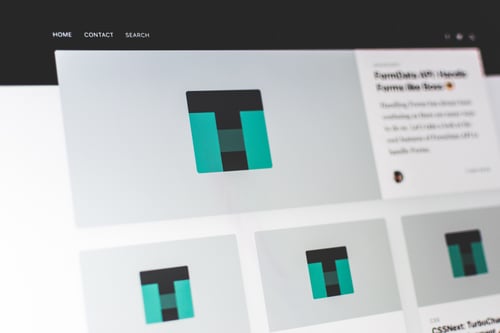
How To Build Your Smart and High-Converting Business Website In A Month?
How old is your website?
A year? Two years? Three years? God forbid… Ten years?
When was the last time you had an overhaul to fix issues like 404’s, duplicate posts or banner ads?
You see, your market has evolved and are now everywhere:
- Instagram, Pinterest, Periscope and other social media services
Here’s a question: Is your # 1 salesperson – your website – doing a tremendous job in attracting these expanding markets while driving sales for your business?
I hope so.
Let’s face it, some of these “salespeople” have failed other businesses in more ways than one.
How?
- Some were not developed to find these emerging markets.
- Some don't know who your customers are.
- They are clueless on how to work with your prospects.
- They are not learning.
- They are not evolving.
And as time goes by, these websites flounder – deprived of new skills and knowledge to land new clients.
By now, the owners of these websites have realized it’s time for a re-boot. They need a re-design. They need a better, professional site. Unfortunately, the market has moved on. Google has a new apple of the eye – and it’s not them. Sales have plunged to an all time low. The funnel has dried up. Worse, die-hard fans have found a new product to root for.
Wouldn’t it be better to arm your salesperson with the right set of skills from the get go? Wouldn’t it be better if there were a continual target to work towards? Isn’t it smarter to start early and work your way towards your goal quickly?
What if you could upgrade your salesperson using up-to-the-minute data from your prospects themselves; letting it evolve to become more intelligent, more informed and more involved with your market?
What if it’s possible at a fraction of a cost to develop a traditional one?
How’s that sound?
When I learned about Growth-Driven Design, I knew I had the answer to these burning questions. I know you have the same issues and concerns as well. Let me share with you what I’ve learned so far. I'm hoping that it would make you realize how Growth-Driven Design can help you build a smarter business website.
What is Growth-Driven Design and how it works?
GDD is a breakthrough in web design, development and inbound marketing. It involves quick time-to-market websites, only more affordable than a one-time, monolithic platform. It went away from the traditional "set and forget" implementation into a dynamic, real-time approach.
Here’s how a traditional web design process looks like:
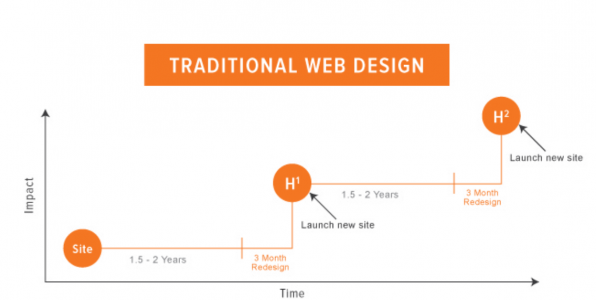
As you can see, traditional websites take time to develop a following. This graph tells us that you need at least 1 ½ years to determine the effectiveness of your site as a profit and lead generating tool. But things happen so fast online. Going slow and steady is not a sound business decision anymore.
Growth-Driven Design took a different approach. It splits the design process into two phases:
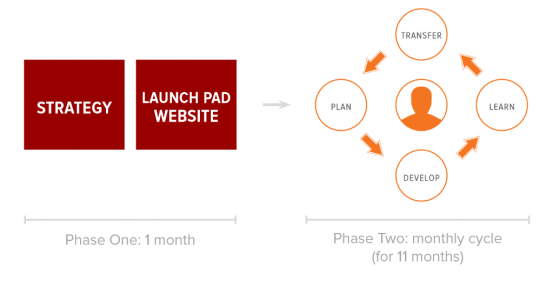
Phase 1 - It involves developing a strategy so you know what to reach and creating buyer persona so you know whom you’re trying to reach.
The next process is to create a wishlist. Your wishlist contains items and action plans you would like to implement on your new site.
Lastly, you have to create a Launch Pad website. The traditional web design process stops here and call it a day. However, creating a Launch Pad website is far from over. It will become the starting point of all Growth-Driven Design activities. Phase 1’s completion is 30 days.
Phase 2 – This phase is called The Growth-Driven Design Cycle.
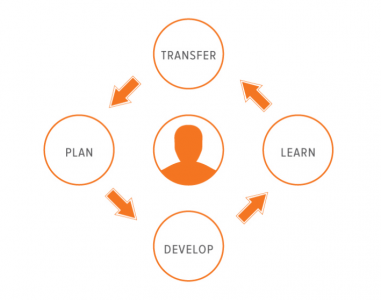 Once your Launch Pad website is online, you’ll perform an 11-month cycle of planning, developing, learning and transferring. In the planning stage, you’ll figure out the action steps in the beginning of each cycle by comparing your current performance against your goals.
Once your Launch Pad website is online, you’ll perform an 11-month cycle of planning, developing, learning and transferring. In the planning stage, you’ll figure out the action steps in the beginning of each cycle by comparing your current performance against your goals.
The developing stage includes implementing the action steps and collecting the results.
The learning stage is where you validate or disprove your assumptions. Once done, you’ll have to publish your findings in a central location for future reference.
The last phase (transferring stage) involves sharing of information to other parts of the business. This stage is where your team gives recommendations and find ways on how to use them as action steps.
What’s in it for you?
GDD’s approach is to collect and use the data as they arrive. In doing so, you can adapt your design to reflect your market’s needs in any period. Your business becomes more adaptive to market conditions. You don’t have to wait for 30 to 120 months in order to implement the changes. In fact, you can have monthly “re-designs” to reflect these improvements. What’s more, these re-designs costs 70 to 90 less of a total, revamped website.
Thus, you’ll avoid the pitfalls of traditional web design and development:
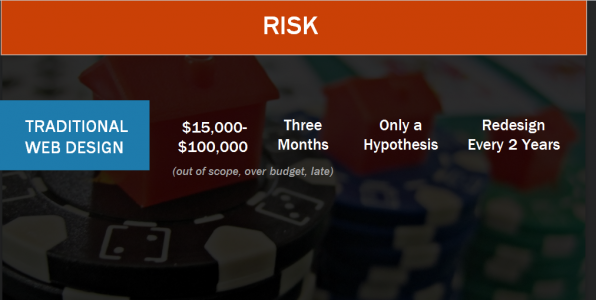
Growth-Driven Design put your business right in the middle of every trend, from every device and from every location. It’s like sitting beside your users – getting first hand information about what they want and what they’re looking for.
As a result, you’ll have a stronger impact to your market in as short as 6 months:
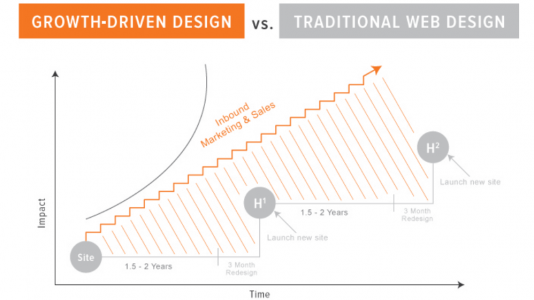
Imagine the benefits of having a website – your best salesperson – learning and developing through real-time data straight from your market:
- Deliver timely, relevant content that understands your market
- Increase your retention rate because people want to learn more about your services
- Maximize your site’s features while continually improving your services to the delight of your customers
- Outsmart your competition who employs “set and forget” approach in web development
- Rank better in search engines, resulting in increased traffic
- Build your funnel with people who love your product
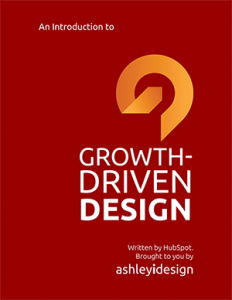 Take the next step
Take the next step
Excitement and apprehension: two emotions that you’ll experience when change confronts you. I know the feeling. In fact, I had mixed emotions when I learned about Growth-Driven Design myself. But things finally got settled when I realized how beneficial it can be, especially to small and medium sized businesses.
I want to take away your doubts about GDD. That’s the reason why I’d like to invite you to download your free copy of "An Introduction To Growth-Driven Design." Get an in-depth understanding of this breakthrough in web design and development. Find out how it’ll change the way you market your product… for the better.
I help businesses and marketers build marketing and sales systems that drive leads and scale with ease.
Not sure where to start? Take my marketing quiz and get personalized next steps.





